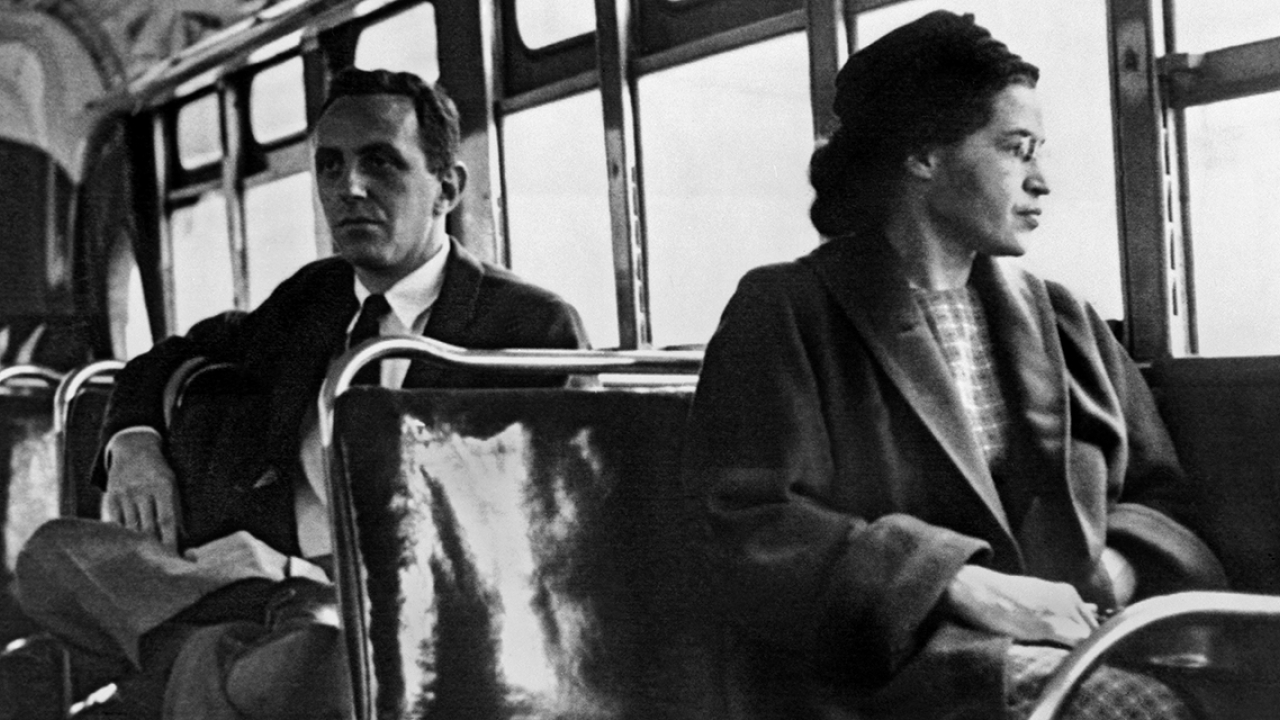Wellesley Historian Offers Insight about Rosa Parks

December 1 marked the 62nd anniversary of the day a bus driver ordered Rosa Parks to surrender her seat to a white passenger on a public bus in Montgomery, Ala. She refused, and in doing so made history.
Police arrested the 42-year-old African American seamstress. On December 5, many of Montgomery’s African Americans, angered by Park’s arrest, began a boycott of the city’s segregated bus system—a protest they sustained for 381 days, and that ended when the Supreme Court upheld a lower court’s decision that ruled segregated public buses unconstitutional. The victory was a significant one for the fledgling civil rights movement.
Media coverage of the day the boycott ended included a now-iconic photograph of Parks seated in the front of a newly desegregated bus. She is looking out of a window; a white man sits behind her.
The photo, according to Brenna W. Greer, Knafel Assistant Professor of Social Sciences and assistant professor of history at Wellesley, is “an image of quiet, prim, femininity” and depicts Parks, in keeping with popular conceptions of her, as “a work-weary, saintly seamstress whose tired feet compelled her to break character and single-handedly (and unintentionally) launch the modern civil rights movement.” It quickly became the image seized upon most to celebrate Parks, to the extent that she later called it her “symbol shot,” her “historical honor badge.”
But that “symbol shot,” said Greer, captured a “gender performance that obscured Parks’ radical nature,” by design. Parks was actually a longtime activist, well-known in Montgomery for her commitment to racial progress and justice. At the time of her arrest, she was consumed with organizing an NAACP workshop, and she was pursuing social change through voter registration, youth education programs, and campaigns opposing violence against African Americans by whites and sexual abuse.
Representation of Parks as the “accidental activist” during the boycott made her appear less threatening and more sympathetic, Greer said, which influenced public attitudes and helped garner support among whites for the boycott and its objectives. Greer, who is studying the civil rights activist and her role during the Montgomery campaign, said this image of Parks was “a deliberate and collaborative public relations effort among African Americans on the ground during the bus boycott” to project Parks as a virtuous victim and the boycott, by extension, as a righteous action.
In protesting segregated buses, Parks’ symbolic value was no less important than her activism; her history underscores the degree to which African American women assumed pivotal roles in the civil rights movement. “As soon as historians begin to look beyond the recognized leaders of any social justice campaign, women come into view,” said Greer. “Black women have traditionally done most of the organizing, fundraising, advocating, and boycotting inherent to African American social justice campaigns.” They also have been traditionally more militant than otherwise understood, she said. Greer explained that, before the bus boycott, some African American working-class women in Montgomery carried razors on public buses to defend themselves against violence from white passengers or bus drivers.
Understanding and appreciating the complex, significant roles of women like Parks in social justice campaigns, Greer said, requires “defeating prevailing notions of gender and leadership that prevent people from recognizing—or accepting—women as leaders and strategists.”



